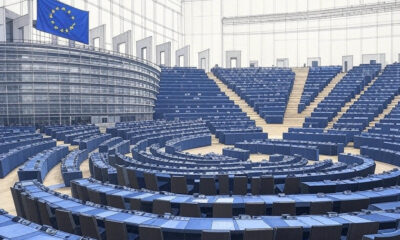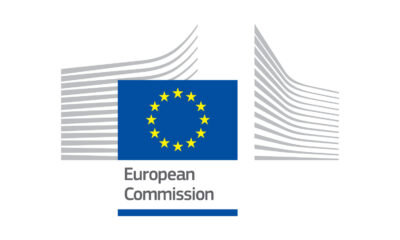Travel
Airport theory, seat squatters and check-in chickens: Why these viral travel trends are a disaster
Cabin crew can remove you from flights and gate agents can deny you boarding for disobeying rules.
Social media loves a travel hack. While some are clever, many are questionable – and a select few are so misguided they might even leave you stranded at the airport.
In recent months, travel trends such as airport theory, seat squatting and playing ‘check-in chicken’ have taken the online world by storm. Are they genius shortcuts or guaranteed disasters? Euronews asked airline experts to weigh in.
Spoiler: they’re not impressed.
Airport theory: The fast track to missing your flight
The idea behind airport theory is simple: arrive at the airport as late as possible – ideally 15 minutes before departure – because airlines supposedly overestimate boarding times. If successful, it means less waiting and more time spent elsewhere.
There’s just one problem: it’s a terrible idea, according to aviation experts.
“Super dumb,” says Keith Van, a community manager at Seats.aero.
“If you show up at the flight with 15 minutes or less to spare, it’s extremely stressful for the gate agent to process if you’ve already been offloaded and your seat has been given away.”
And Van should know – he flies so often that he has earned ‘EuroBonus Millionaire’ status with the SkyTeam network, one of the world’s three major airline alliances.
Gate agents, he adds, are very willing to offload absent passengers – and have every right to deny you boarding. And if you think there was a mistake made by the gate agent, Van assures you there almost certainly was not.
“It’s nearly impossible to assign two people to the same seat under live reservation systems,” he explains.
Airport theory can hit you where it hurts – your wallet
“Even if this hack works nine times out of ten – it won’t – that tenth time won’t be worth the hassle. You will have to book a new flight, but certain destinations have limited flights, and they may be full,” adds Addie, a long-haul flight attendant for a major airline who asked to use a pseudonym.
“If you have not boarded by the time boarding closes, ground staff will not hesitate to offload you. Airlines pay enormous amounts for gate rental, and every minute longer than necessary the aircraft sits at the gate, the more money it costs the airline.”
Rather than a hack, airport theory could be an extremely effective way to end up paying for a whole new flight.
Why seat squatting is a one-way ticket to arguments
If you want an upgrade without paying for it, sit in a better seat and hope nobody notices.
That’s the logic behind seat-squatting, a trend where passengers occupy more desirable seats – extra legroom or a window view – and wait to see if anyone challenges them.
But those seats almost certainly belong to someone else.
“On fuller flights these days, that seat has already been probably booked by someone else,” says Van. “If it leads to an argument, the flight attendant on board will always check boarding passes to see who is supposed to sit where.”
And when flight attendants tell you to move, you must listen to them.
“If you don’t, you’re breaking aviation laws in many jurisdictions, and the captain or crew can boot you off the flight,” he adds.
If you refuse to follow the rules, you might be met by police once you’re off the plane.
Flight attendants will not hesitate to remove you for breaking the rules
“I can tell you personally that if a passenger was refusing to move from someone else’s seat to their own I would not allow them to fly,” says Addie.
“As a condition of carriage, which every person agrees to when booking their flight, cabin crew need to be confident that passengers will follow instructions in an emergency, so an inability to follow a simple instruction like ‘sit in the seat you were assigned’ is reason enough to be removed from the flight.”
There are several valid safety reasons for following the rules, she says. Seat squatting, for example, can disrupt a plane’s weight balance.
“Different zones in the aircraft are required to have different proportions of passengers depending on the weight of the freight being carried in the hold. When you hear the announcement saying that the flight crew are completing their paperwork, this is one of the things they’re checking,” she explains.
If you want to move after take-off and the seat belt signs have been turned off, just ask a flight attendant. Otherwise, she says, sit where you’re told.
‘Check-in chicken’ is like playing roulette with your seat assignment
‘Check-in chicken’ is a kind of game that has gone viral on social media where travellers deliberately wait until the last possible moment to check in, hoping to score an unsold premium seat instead of being assigned the middle seat of doom.
It’s high risk, high reward, according to experts, with an emphasis on the risk.
“This is actually real,” admits Van.
“Many carriers do random seat allocation. Low-cost carriers like Ryanair will allocate middle seats to passengers to entice them to buy upgrades. Even legacy carriers [might] save unsold rows with extra legroom until last. They may even check you in but designate you as an unselected seat and leave it to the gate agent to assign your seat.”
But not every airline follows these practices. US-based Southwest Airlines, for example, designates seat priority by check-in time – all the more reason not to buy into airport theory.
Some airlines that offer upgrades may use check-in time as a tie-breaker, too. So if you check in late, it may cost you a bump to a better seat, Van adds.
Don’t believe everything you see on TikTok
In the hierarchy of travel hacks, some ideas are genuinely useful.
Addie recommends wearing compression socks on long flights to prevent deep-vein thrombosis – a potentially fatal form of blood clotting – and drinking lots of water to stay hydrated, as it aids recovery.
Other hacks, such as airport theory or playing check-in chicken, are more likely to annoy airline staff, delay flights or leave you stranded. At worst, they can put you and your fellow passengers at risk.
“The most important thing to remember is that the cabin crew is there for your safety. Customer service is not our primary job,” Addie explains. “If you are being asked to do something, there is a reason behind it.”
To put it another way: if a travel hack sounds too good to be true, it probably is.
Travel
Italian rail operator reveals €1bn investment to tackle Eurostar monopoly
Italian state railway group Ferrovie dello Stato (FS) on Tuesday revealed plans to launch a high-speed rail service between Paris and London through the Channel Tunnel.
The service, set to be launched by 2029, will challenge Eurostar’s long-running monopoly on the route between the UK capital and mainland Europe.
FS said that the project, with an earmarked €1 billion, would be carried out in partnership with Spanish firm Evolyn, led by the Cosmen family.
Evolyn announced back in 2023 that it wanted to launch a service between Paris and London. The details of its partnership with FS are not yet finalised.
“This investment is a decisive step forward in FS Group’s vision of building a more integrated, competitive and sustainable European rail network,” Stefano Antonio Donnarumma, FS Group CEO, said in a statement.
“High-speed rail networks are the backbone of efficient and environmentally friendly mobility, and by expanding our presence on key corridors, we are not just investing in infrastructure and innovation, but also in the future of European transport,” he added.
The link between London and Paris could be extended to services via Lille, Ashford, Lyon, Marseilles and Milan, said FS on Tuesday.
The announcement comes after Virgin Group, owned by billionaire Richard Branson, also made a bid to challenge Eurostar’s monopoly last month.
Virgin Group told the Financial Times that it intends to raise £700 million (€820mn) in debt to finance a high frequency service from London to Paris and Brussels, with plans to later extend the route to Amsterdam.
The firm’s plans to run trains along these routes were originally complicated by a spat over an east London rail depot, the only available space to park high-speed cross-Channel trains.
After Eurostar claimed that it had used all available spots, Evolyn and Virgin appealed to the UK’s rail regulator.
In its statement released on Tuesday, FS said that it had received the green light from the UK’s Office of Rail and Road to use the Temple Mills depot.
FS added that it had obtained the necessary licenses and permits in France, and that it was working to increase capacity at St. Pancras. It said that the latter task was “at an advanced stage”.
The Italian firm already runs a high-speed service between Milan and Paris, as well as intercity trains within France.
FS Group also has an established presence in the UK, where it has been present since it acquired train operator c2c in 2017.
Alongside Virgin, FS, and Evolyn, firms Gemini Trains and Deutsche Bahn have expressed interest in accessing the Channel Tunnel route.
Critics of Eurostar’s monopoly argue that increased competition would bring ticket prices down and improve service quality.
Travel
Some airlines are banning power banks on flights. Here’s what travellers need to know
A growing number of airlines are implementing restrictions or outright bans on carrying power banks during flights.
What was once an essential travel accessory is now increasingly being scrutinised by air travel safety authorities after several incidents of batteries overheating.
So what are the rules, and which airlines are clamping down on passengers bringing these small but potentially dangerous devices on board?
Power banks can pose a fire hazard on flights
Power banks, or portable chargers, pose a hidden risk that has prompted some airlines to re-evaluate their policies.
“The main issue with power banks is the lithium-ion batteries they contain, which, if damaged or faulty, can pose a fire hazard,” says travel consultant Colin Pearson, collaborating with boutique hotel Stanton House Inn. “A malfunctioning power bank can overheat, catch fire, or even explode, which is particularly dangerous in the confined space of an aircraft.”
Lithium-ion batteries are known to be volatile, and when they are exposed to high pressure or extreme temperatures, such as during a flight, the risks increase.
As a result, the International Air Transport Association (IATA) has recommended that power banks be placed in passengers’ carry-on luggage only and limited to specific watt-hour ratings to mitigate the risk of fire.
Airlines introduce power bank restrictions
While incidents of power banks catching fire have been rare, they’ve been enough to spark widespread concern among airline safety experts.
“It’s no longer merely a matter of inconvenience. The safety of all passengers and crew members aboard the aircraft is the primary concern, and even a single incident can have far-reaching consequences,” says Pearson.
Airlines such as Qantas and Emirates have recently introduced stricter rules regarding power bank transportation. Other carriers, including Cathay Pacific and Singapore Airlines, have banned passengers from using them during flights or charging them using the plane’s power outlets.
While these policies may vary slightly from one airline to another, most have begun enforcing size limits or outright bans on larger capacity power banks.
“The key thing to remember is to always check the specific airline’s policy before you fly,” advises Pearson, as rules can differ.
In general, travellers can bring power banks on board with a capacity of up to 100 watt-hours without having to notify the airline.
But portable chargers between 100 and 160 watt-hours usually need special approval.
Those above 160 watt-hours are not allowed on flights.
Importantly, power banks can only be packed in carry-on bags, never in checked luggage. Make sure you also check if your airline allows you to place these devices in overhead lockers or if they will have to remain with you in your seat, as some have much stricter regulations.
With some airlines not permitting the use of a power bank on board, Pearson advises considering alternatives, such as charging the device before travel or seeking out airports that offer charging stations to avoid the risk altogether.
“A little extra preparation can go a long way,” he says. “This ban on power banks is just another step toward ensuring safer, more secure flights for everyone.”
Travel
Floating cities: The biggest cruise ships launching in 2025 weigh over 200,000 tonnes
The biggest cruise ship in the world today is nothing short of a floating city. The Icon of the Seas weighs in at 248,663 tonnes and stretches 365 metres from bow to stern.
At three times the weight of the QE2, the Icon is a world of destinations in itself. Inside, you’ll find an ice skating rink, a water park, a swim-up bar, and even a suspended infinity pool. But this giant ship is set to be joined by an even heavier sistership in 2025.
Cruise Industry News lists 17 cruise ships projected to enter service in 2025. These range from American cruise line’s Patriot and Pioneer ships, with the capacity for 125 guests, to giant mega ships accommodating 5,000 or more.
Eight of these ships weigh in at over 100,000 tonnes. Three of them are more than 200,000 tonnes in weight – that’s the same as around 500 fully laden Boeing 747 jumbo jets. These are the five biggest cruise ships ready to float in 2025.
1. Royal Caribbean’s Star of the Seas
Joining Icon of the Seas this year will be the second of the Icon class ships from Royal Caribbean. Star of the Seas is expected to be just like her sistership, although on paper, she weighs in slightly higher at 250,800 tonnes.
Construction began in February 2023, and just last October, the ship was floated out for the first time.
While the Icon of the Seas sails from Miami, the Star of the Seas will cruise from Port Canaveral. Itineraries will be seven nights and will touch Eastern and Western Caribbean destinations, including Royal Caribbean’s own private island, Perfect Day at CocoCay.
Onboard are eight different neighbourhoods, 40 dining and drinking outlets, multiple swimming pools, and dozens of waterslides. Cabins are stunning, with options to upgrade to panoramic sea or sunset views, and even a three-story Family Townhouse complete with an in-suite slide.
Full operation of the ship will begin on 31 August, but ahead of that, Royal Caribbean is running a handful of ‘showcase sailings’. These shorter three-night trips are a great opportunity for cruise lovers to check out the giant ship at a lower cost.
2. Disney Cruise Line’s Adventure
Adventure will be the eighth cruise ship owned and operated by Disney Cruise Line, and its biggest yet. Coming in more than 50,000 tonnes heavier than its Wish class vessels at 208,000 tonnes, the ship is 342 metres in length and will accommodate around 6,000 guests.
As well as being Disney’s largest cruise ship, Adventure will be the first to be based in Asia. Operating out of Singapore, the ship will undertake short three to five-night cruises with no ports of call, just a Disney party in the ocean.
Onboard is the first-ever Disney Cruise Line rollercoaster at sea, seven themed lands, and a Marvel ‘style studio’ where you can get a heroic makeover (and yes, adults are allowed too). Stage shows are plentiful, and choices of staterooms and suites – some that even have private hot tubs.
Adventure is still under construction and hasn’t been floated out yet. It’s expected to do so in May. Its maiden voyage is set to take place on 15 December, when it will head out for its first three-night trip.
3. MSC Cruises World America
At 205,700 tonnes and 333 metres in length, World America isn’t much smaller than the Icon class giants of Royal Caribbean. It’s the second World-class ship built for MSC Cruises following World Europa, which entered service in December 2022. But while Europa sails from ports in the Mediterranean, America is destined for, well, America.
From Miami, World America will sail seven-night Caribbean cruises, alternating East and West Caribbean itineraries. Included in the ports of call will be Puerto Rico, Dominican Republic, Mexico and Honduras.
Within the 22 decks, there’s a choice of 19 different restaurants plus 20 bars and lounges. There’s a waterpark, shows, copious shopping opportunities and the Family Aventura theme park, featuring the industry’s first over-water swings.
The ship is complete and ready to sail. It’s due to have its official naming in Miami on 9 April, for which its Godmother, Drew Barrymore, is set to be in attendance. World America left the French port of Saint Nazaire on 27 March and should arrive in Miami on 6 April. It is planned to depart on its maiden voyage on 12 April.
4. Princess Cruises Star Princess
The Star Princess is the second Sphere-class cruise ship for Princess Cruises, following Sun Princess, which took its first trip in February 2024. The pair are the largest ships ever built in Italy, with a length of 345 metres, accommodation for 4,300 and a weight of 175,000 tonnes.
Many features of the Star will be similar to its sistership, although it does have some new additions. The new ship will have pickleball and basketball courts, as well as a jogging track, and expanded areas in the most popular outlets, including O’Malley’s Irish Pub.
The vessel is still under construction and is expected to be delivered in September 2025. Its planned maiden voyage will be on 4 October, with its initial trips focused around the Mediterranean Sea. By late October, the ship will redeploy to the Caribbean, and in early 2026, it will head to Alaska.
5. TUI Cruises Mein Schiff Relax
This 160,000-tonne megaship is one you don’t need to wait for. TUI’s Mein Schiff Relax was officially delivered on 7 February and entered service on 2 March. It’s been operating a series of Mediterranean cruises out of Palma de Mallorca since then.
Onboard, the ship has a strong focus on wellness and relaxation. Its spa offers massages and other treatments, while a jogging track and soft-floored yoga deck let guests stretch their legs. There’s a kids club, pool and sauna, and more than 30 bars and restaurants to choose from.
At present, Mein Schiff Relax is running seven or eight-night cruises from Mallorca, touching points in Spain, France and Italy. Later in the year, it will switch to the south, operating eight- and nine-night cruises down to the Canary Islands.
Can cruise ships get any bigger?
While critics may brandish these gargantuan ships as monuments to excess, the feat of engineering and ingenuity they represent cannot be ignored.
Royal Caribbean’s Icon class ships have raised the bar for cruising, but the question remains – can ships get any bigger?
Italian shipbuilder Fincantieri, which constructs cruise vessels for the likes of Princess Cruises, MSC Cruises and others, told the Telegraph there is no specific ceiling for the maximum size of the craft.
The spokesperson said there’s no engineering reason cruise ships can’t continue to increase in size, as changes in maneuverability can be compensated for with more powerful propulsion.
However, challenges will arise when it comes to docking and maintaining anything bigger – some of the largest ships in service today already struggle to find ports to accommodate their size, often mooring offshore and ferrying passengers in by water taxi.
And the people who live in ports where these massive ships dock also feel the impact. Several European tourist hotspots are restricting cruises from docking, including the Greek island of Santorini, where tens of thousands of passengers disembark on peak days.
Then, of course, there’s the environmental impact to consider. All these new ships are LNG-powered, which the cruise lines like to tout as being ‘green.’ However, while LNG is lower in CO2 emissions, it releases other, more harmful gases, and is considered by the World Economic Forum to be a ‘bridge fuel,’ not a sustainable long-term solution.
But the biggest challenge to an even larger ship is market demand. In the past there was a trend of ‘bigger is better,’ and not just in cruising. Aircraft like the A380 and Boeing 747 were once the epitome of modern travel, but times are changing.
Post-COVID, more people are concerned about being in close quarters with strangers and prioritise comfort over size. In aviation, this has seen the widespread retirement of double-decker planes; whether the cruise market ends up going in the same direction remains to be seen.
-

 Politics7 days ago
Politics7 days agoEU Parliament Tackles Steel Industry, Fundamental Rights, and Budget Priorities in Plenary Session
-

 EU & the World7 days ago
EU & the World7 days agoIs Cory Booker Still Speaking? How Long His Filibuster Lasted
-

 EU & the World7 days ago
EU & the World7 days agoPaul Mescal’s Girlfriend: Who Is the Actor Dating?
-

 Sports7 days ago
Sports7 days agoNBA, Steph Curry and Nikola Jokic show: Memphis knockout, Minnesota no
-

 Sports7 days ago
Sports7 days agoMilan-Inter: Conceiçao with a doubt, Inzaghi changes six
-

 EU & the World7 days ago
EU & the World7 days agoVal Kilmer’s Health: His Battle With Cancer & How He’s Feeling Now
-

 Politics6 days ago
Politics6 days ago36 000 free EU travel passes for 18-year-olds
-

 Sports7 days ago
Sports7 days agoTrapani Shark leads the way, Jasmin Repesa reveals the secret









